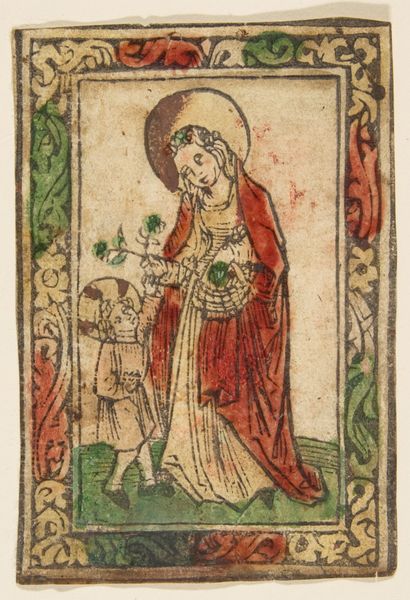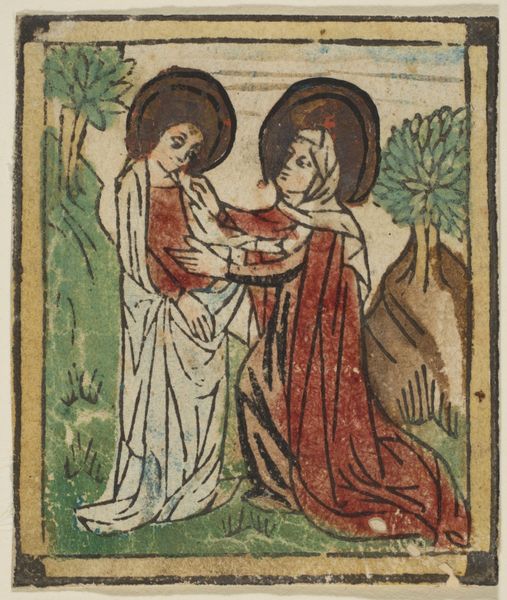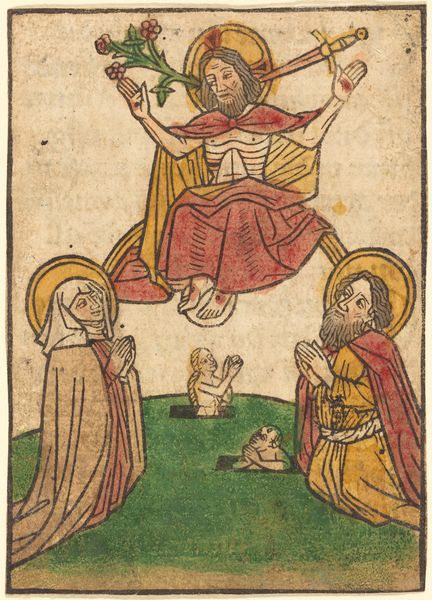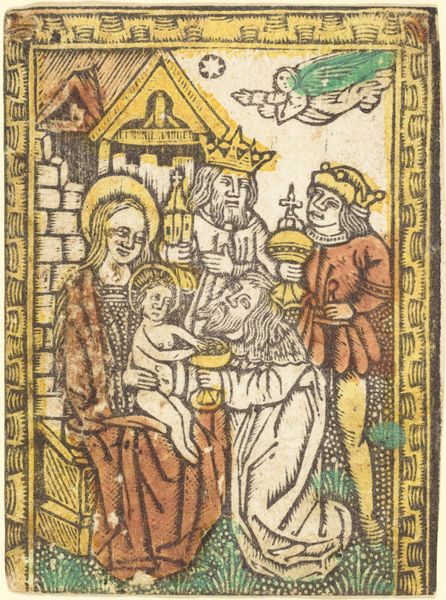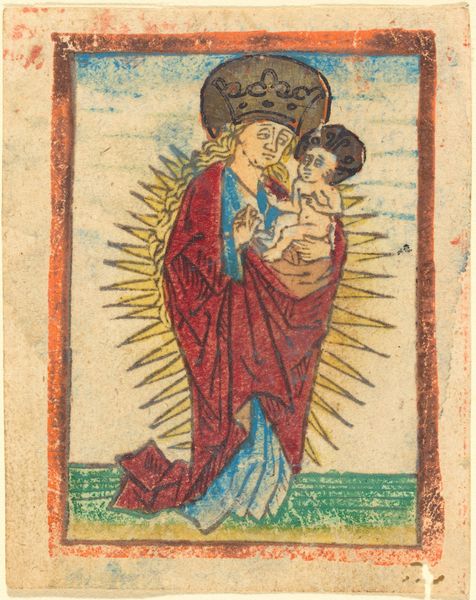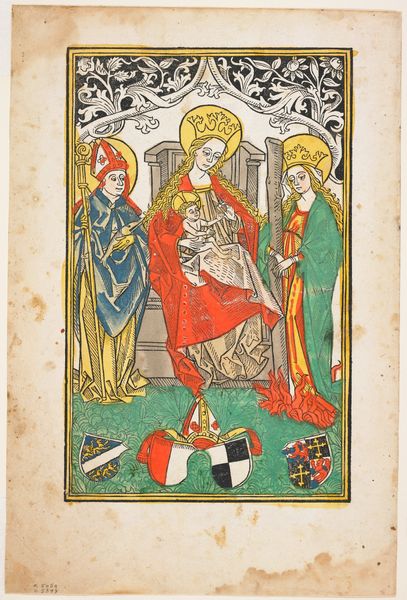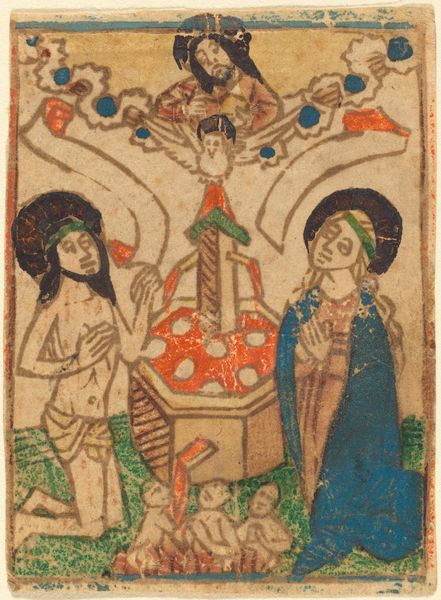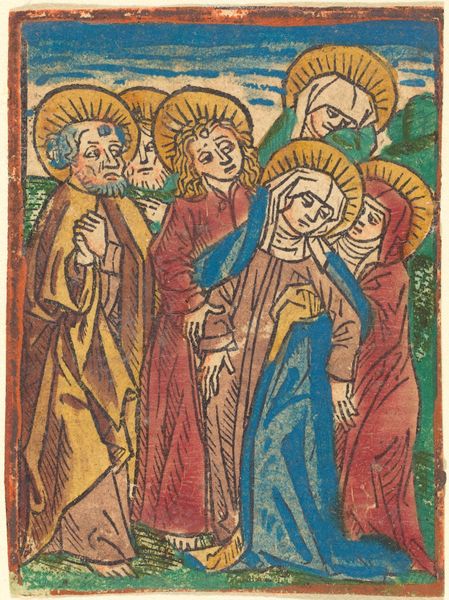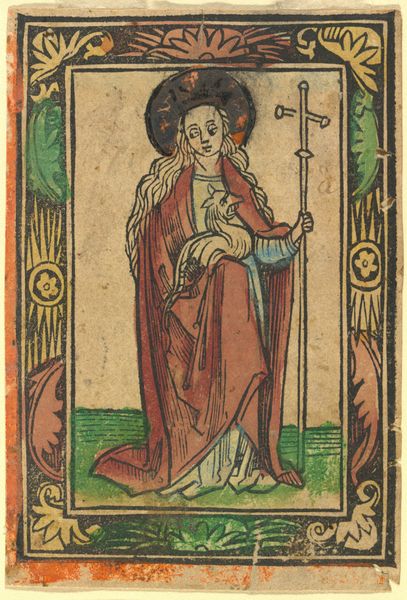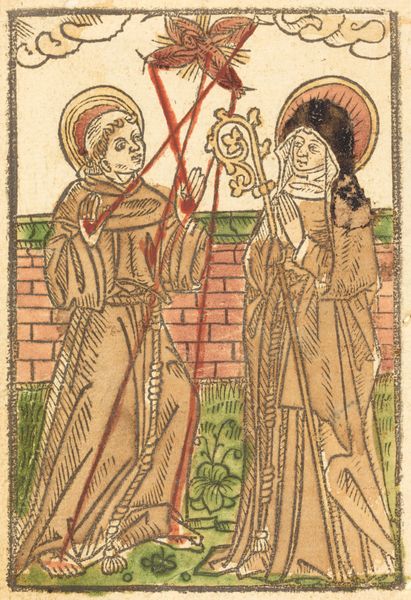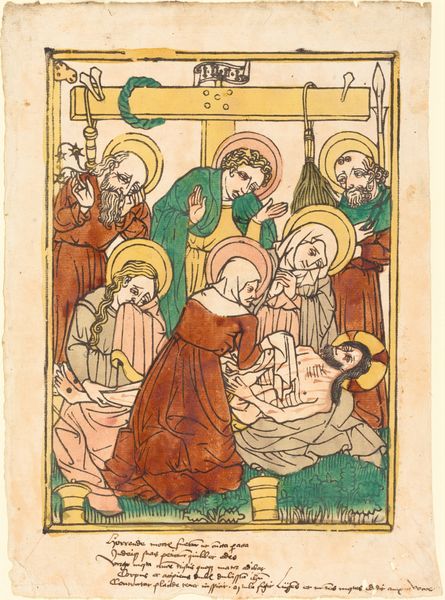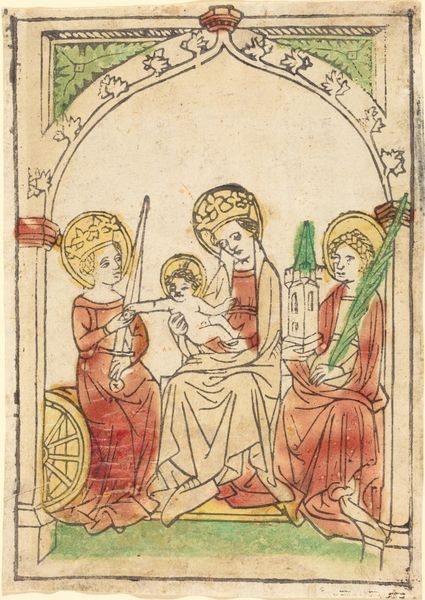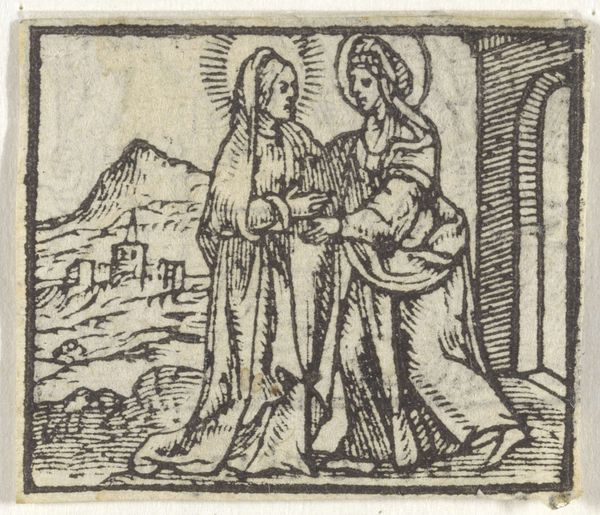
painting, gouache
#
medieval
#
painting
#
gouache
Copyright: National Gallery of Art: CC0 1.0
Editor: Here we have “Saint Anne with the Madonna and Child,” an anonymous gouache painting likely created between 1470 and 1500. I find its directness and simplicity quite charming, a real window into medieval artistic practices. How would you interpret this work? Curator: This piece is interesting when we consider the materials themselves. Gouache, often seen as less prestigious than oils, suggests a wider accessibility to art-making during this period. Look at the labor involved in grinding pigments, the cost of parchment. It tells a story about who could create, consume, and participate in artistic production. Editor: That's a fascinating point. I hadn’t considered the accessibility aspect. So, the choice of gouache and the stylized depiction might reflect a particular patron or a specific social context? Curator: Precisely. It begs the question: Was this for personal devotion, a commission for a less wealthy patron, or even perhaps a practice piece from a workshop? The somewhat flattened perspective and bold colors can also be tied to broader artistic traditions where symbolic communication outweighs naturalistic representation. Consider, too, where the raw materials may have originated from; such global flows are historically intertwined with art production. Editor: So, it is not just the image, but how the image was materialized? I’m thinking of the sourcing and manufacturing. How does that influence what the artwork ultimately communicates? Curator: Absolutely. Understanding the "how" and "why" it was made allows us to look past purely aesthetic values and really dig into the historical and social forces at play. Editor: I see the artwork in a new light. Paying attention to materials transforms it into something quite interesting, something about access, labour, and global trade routes even then. Thanks so much! Curator: Indeed! Recognizing the inherent connection of material choices allows a much broader vision of artistic importance.
Comments
No comments
Be the first to comment and join the conversation on the ultimate creative platform.
